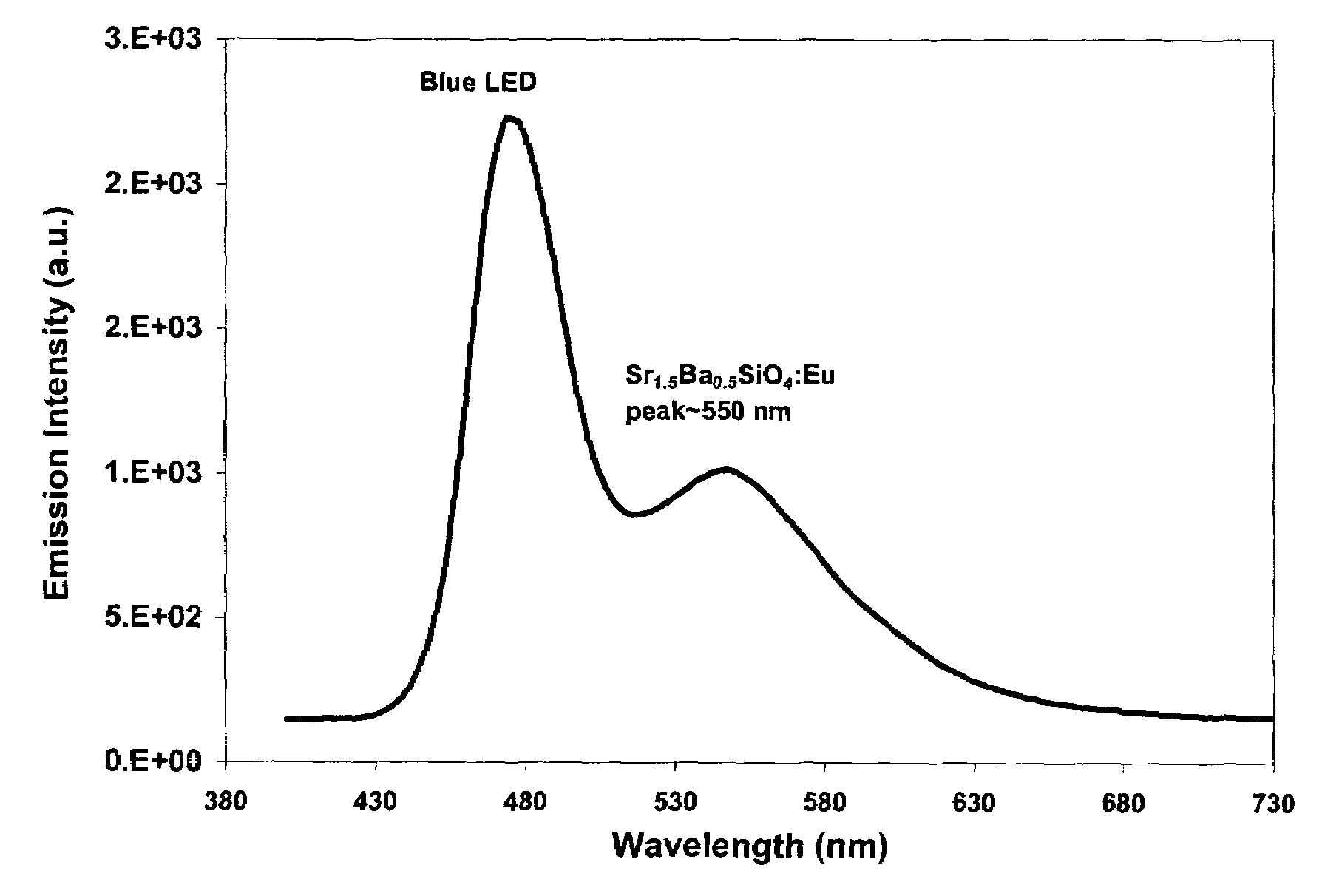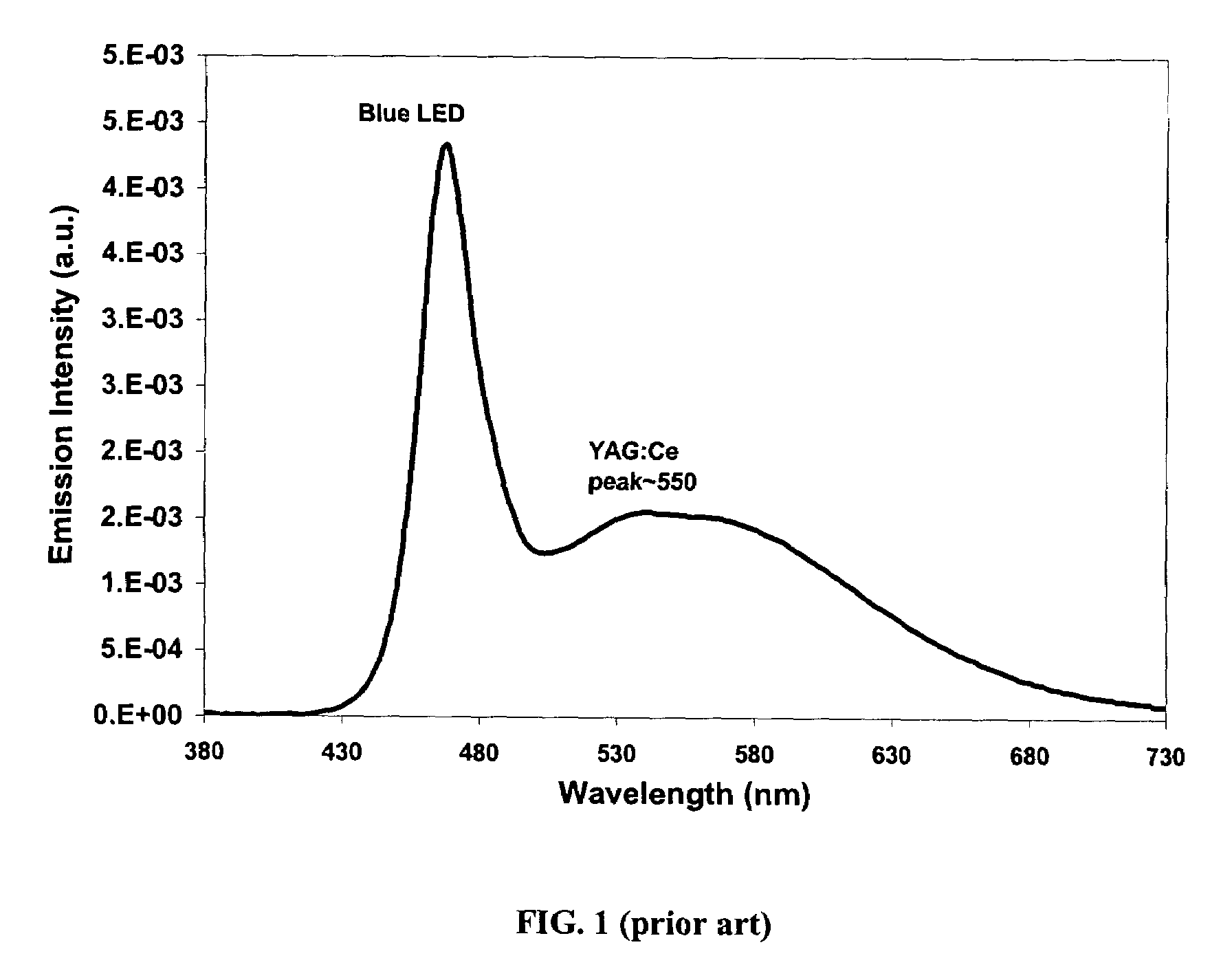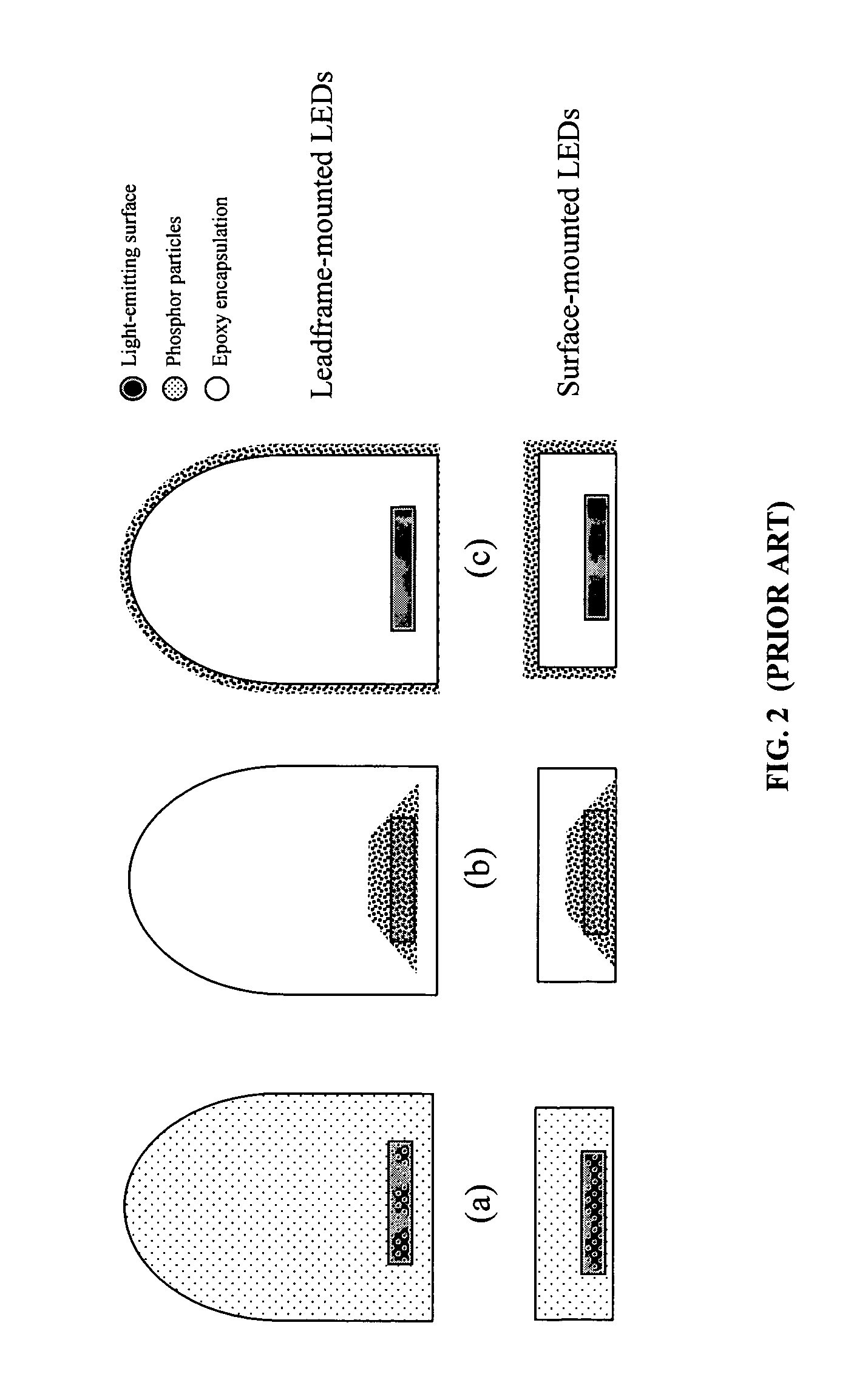Light emitting device having silicate fluorescent phosphor
a light-emitting device and fluorescent phosphor technology, applied in the direction of discharge tube luminescnet screens, energy-saving lighting, sustainable buildings, etc., can solve the problems of low color-rendering characteristic of the resulting white light, complex driving circuitry, and emission temperature dependence, and achieve high efficiency
- Summary
- Abstract
- Description
- Claims
- Application Information
AI Technical Summary
Benefits of technology
Problems solved by technology
Method used
Image
Examples
example 1
[0041]
SrCO3145 gramsBaCO3197 gramsSiO263 gramsEu2O33.5 gramsNH4Cl5.4 grams
example 2
[0042]
BaCO3390 gramsSiO263 gramsEu2O33.5 gramsNH4Cl5.4 grams
A phosphor according to the invention may be produced using mixtures of the ingredients specified in either of examples 1 or 2 above, by combining, slurry-mixing, and subsequently ball-milling in de-ionized water to an average particle size of about one to five microns. After drying, the mixture is fired in a quartz crucible at 1000° centigrade for 1 hour in an atmosphere of air. After firing, 5 grams of ammonium chloride is added, and the mixture is again cocomminutated using a ball mill to an average particle size of about one to five microns. The mixture is again fired, but this time in a reducing atmosphere (such as in either carbon monoxide or in hydrogen) for an additional 3 hours to yield a phosphor according to the invention.
[0043]In one preferred embodiment of the invention for applications requiring efficient bluish white (“cool white”) the present invention provides a green-yellow phosphor comprising SrxBayCazSiO...
PUM
| Property | Measurement | Unit |
|---|---|---|
| wavelength | aaaaa | aaaaa |
| peak wavelength | aaaaa | aaaaa |
| peak wavelength | aaaaa | aaaaa |
Abstract
Description
Claims
Application Information
 Login to View More
Login to View More - R&D
- Intellectual Property
- Life Sciences
- Materials
- Tech Scout
- Unparalleled Data Quality
- Higher Quality Content
- 60% Fewer Hallucinations
Browse by: Latest US Patents, China's latest patents, Technical Efficacy Thesaurus, Application Domain, Technology Topic, Popular Technical Reports.
© 2025 PatSnap. All rights reserved.Legal|Privacy policy|Modern Slavery Act Transparency Statement|Sitemap|About US| Contact US: help@patsnap.com



